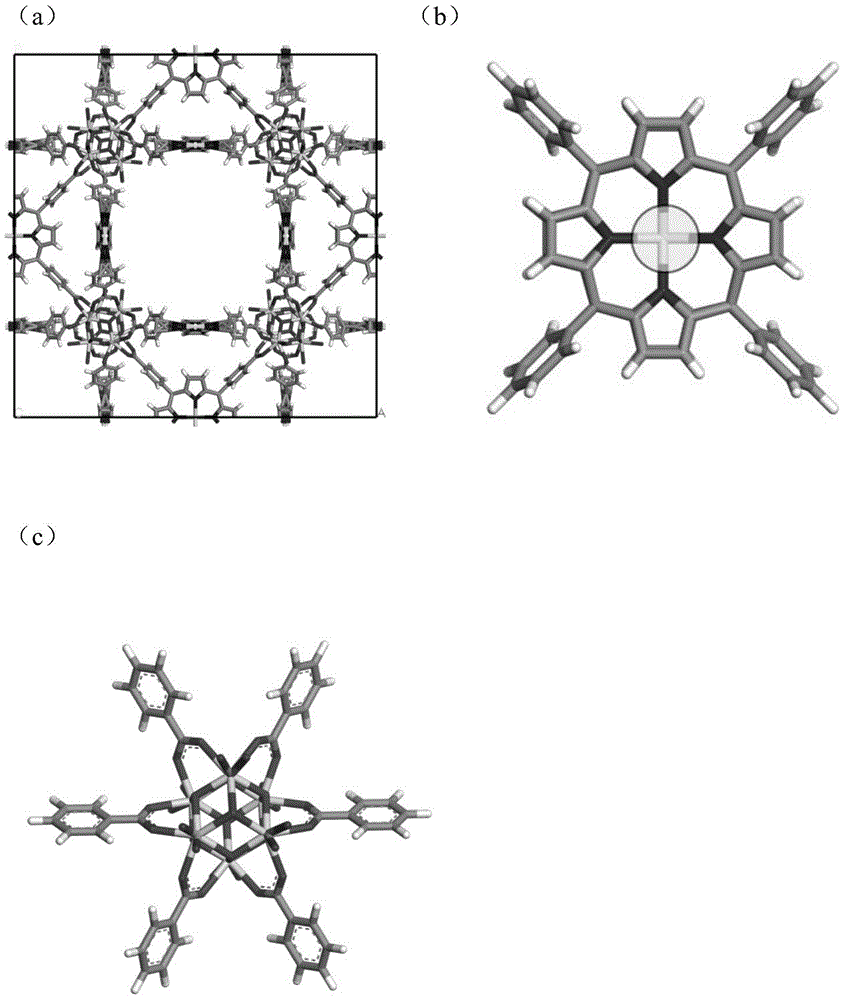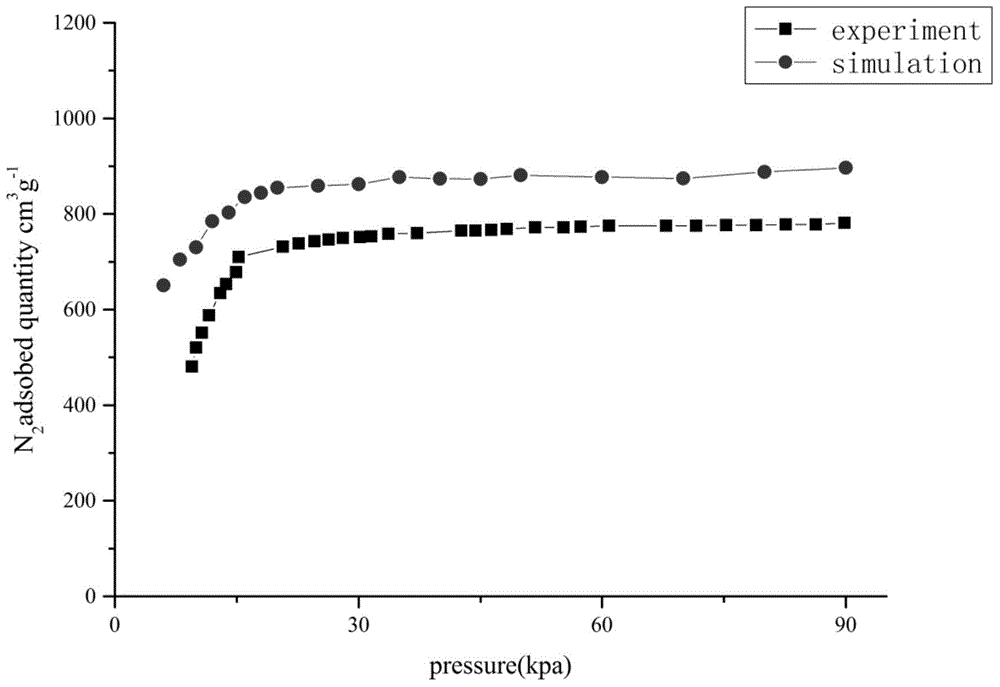Method for quantitatively analyzing efficiency of metalloporphyrin MOFs materials in separating CO2/CH4
A metalloporphyrin, separation efficiency technology, applied in the direction of adsorption purification/separation, special data processing applications, instruments, etc., can solve the problems of strict operating environment requirements, non-reusable, complicated operation, etc., and achieve the effect of overcoming complexity
- Summary
- Abstract
- Description
- Claims
- Application Information
AI Technical Summary
Problems solved by technology
Method used
Image
Examples
Embodiment 1
[0028] Example 1 Quantitative analysis of CO in metalloporphyrin MOFs material PCN-224-x (x=Ni, Fe, Co, Mn, Mg, Zr) 2 / CH 4 separation efficiency
[0029] (1) Construction of PCN-224-x material cluster model
[0030] PCN-224 material is a newly synthesized metalloporphyrin MOFs material, it has Im-3m cubic crystal system space group structure, and its unit cell parameters are by Zr 6 Metal center group and Zr metalloporphyrin ligand self-assembled to form, the pore volume is 1.59cm 3 / g, the aperture size is Its unit cell such as figure 2 Shown in (a), molecular formula is [C 576 h 288 N 48 o 256 Zr 60 ]. Import the PCN-224 experimental crystal data structure into MS5.0 software, and intercept Zr metalloporphyrin ligand and Zr 6 Metal center groups such as figure 2 (b) and figure 2 (c). The Zr metalloporphyrin ligand is saturated with benzene, and the Zr 6 The metal center group is treated with proton saturation.
[0031] To study the effect of different ...
PUM
 Login to View More
Login to View More Abstract
Description
Claims
Application Information
 Login to View More
Login to View More - R&D
- Intellectual Property
- Life Sciences
- Materials
- Tech Scout
- Unparalleled Data Quality
- Higher Quality Content
- 60% Fewer Hallucinations
Browse by: Latest US Patents, China's latest patents, Technical Efficacy Thesaurus, Application Domain, Technology Topic, Popular Technical Reports.
© 2025 PatSnap. All rights reserved.Legal|Privacy policy|Modern Slavery Act Transparency Statement|Sitemap|About US| Contact US: help@patsnap.com



